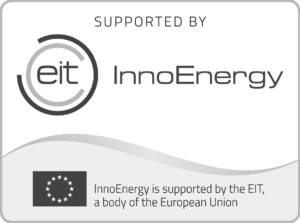18.10.2019
Argo Kubja: storytelling needs to create emotional responses and establish meaningful connections
Marketing is no longer just a product or service that you sell. Instead, it seems like it’s about the story that comes with this product that is becoming an increasingly popular selling article because it helps to engage the partners and customers. But how do you tell the story without turning it into a fairy tale? Mentor Argo Kubja talked about this topic during the Tehnopol Startup Incubator workshop.
Storytelling describes the social and cultural activity of sharing stories. When fairy tales are based on the improvisation, brand stories have to be more realistic to get the better connection with people and the brand. During the workshop Kubja said that people like stories that touch them in some way. In Estonia, there is a tendency amongst companies to describe themselves as “the best”, “most trustworthy”, etc. Bragging and talking in superlative seems to be the go-to strategy in marketing. Why? Well, the truth is out there, but for fact this is not what the audiences are looking for!
Argo compared telling stories with ancient art and pointed out that already back then self-expression was essential for people. Each story doesn’t connect to each one of us and that’s art. Telling a story also creates an emotional response and creates some sort of bond with your admirer or client. When the story is well told, it feels almost as real as feeling the smell and taste from the coffee commercial.
But which is a great story? Argo brought out 5 characteristics in his workshop:
- Meaningful. Otherwise it’s waste of time. A story is meaningful if it is published at the right time and in the right place. For example, it is relevant to publish Christmas-related stories in the winter and to talk about the cold handmade lemonade in the summer. In addition, think carefully about why you are sharing this story and what does it offer to your target audience.
- Personal. The story should be personal from the company aspect or client aspect. Don’t glorify your own product, but make it about the people around the product. Whether they are the authors, creators, users or customers of the idea, it is much easier to establish an emotional connection with the brand. Don’t add anything that your product or brand is not, and don’t take away what you actually are. You need to be able to relate to the story, and that is possible if you are honest.
- Emotional. Emotional stories are better to remember, so bring emotions up quickly and keep them throughout the story. Since not all emotions are good, think carefully which emotions you want to create with your story. It’s not what you do, but how you do it!
- Easy. In a swipe and scroll world our attention on the social media posts is only 3 seconds. So how do you attract attention in only 3 seconds? With simplicity! Choose one emotion or message that you want to focus on, and when that is something that touches the person, you’ve got their attention. You can have more messages in one story if your company is more solid.
- Authentic. Don’t copy, it has to be your story. You can formulate your ideas based on the good examples, but do it in style.
The best example of great story tellers are the kids. They tell stories without any boundaries and just let their emotions out. We should learn from them and we shouldn’t be afraid of stories. Remember, everyone has their own story! If you are not the one creating your own, somebody else will, and there is a chance you won’t like it. So don’t wait for the right time and create your story rather before than after.













